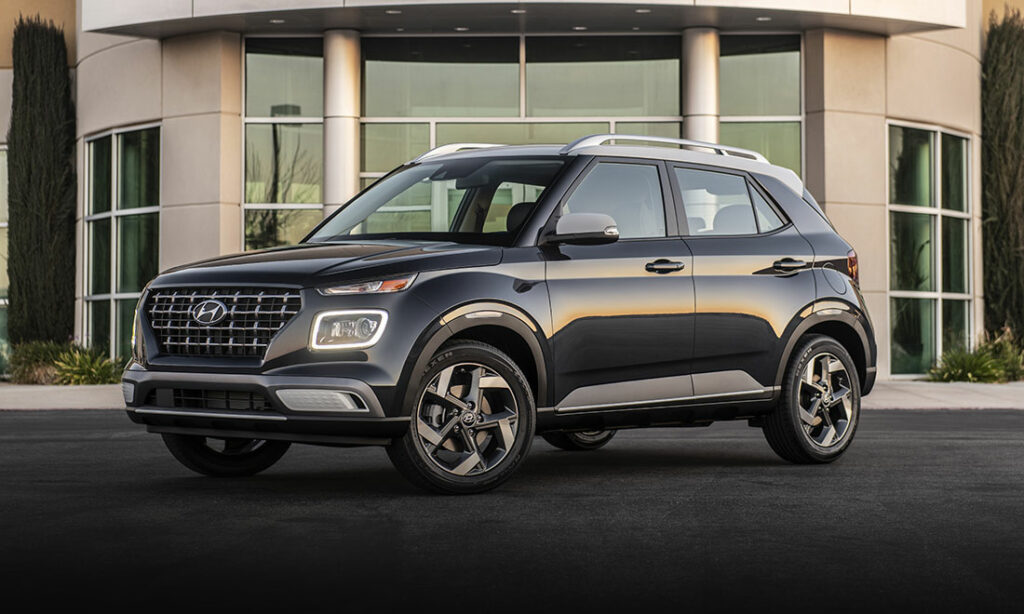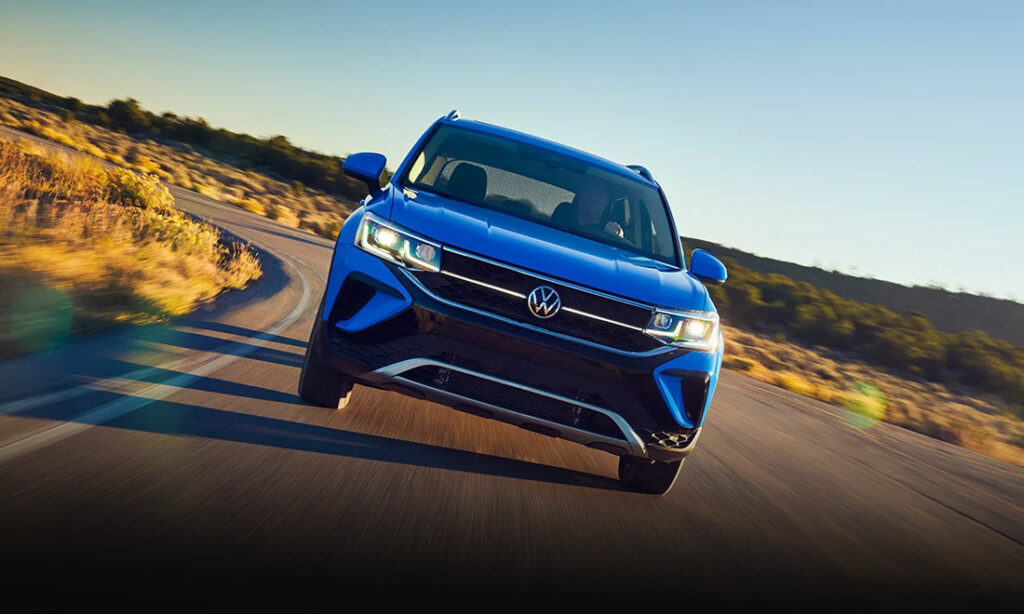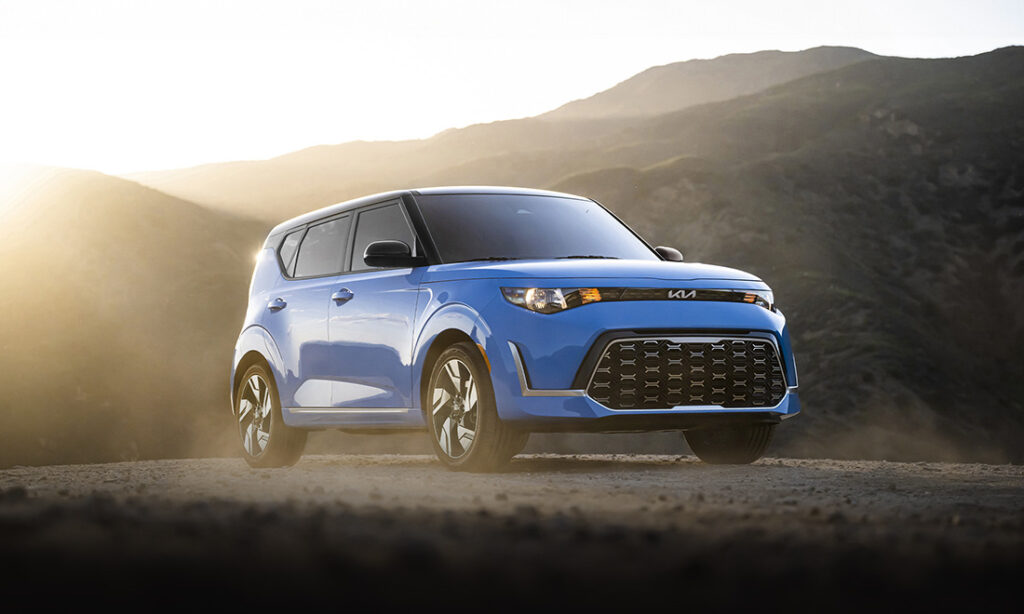Ford Mustang Generations: Through the Years
We look at all the Ford Mustang generations, a span that runs nearly 60 years and has no shortage of amazing pony cars.
Longest Running Ford Nameplate
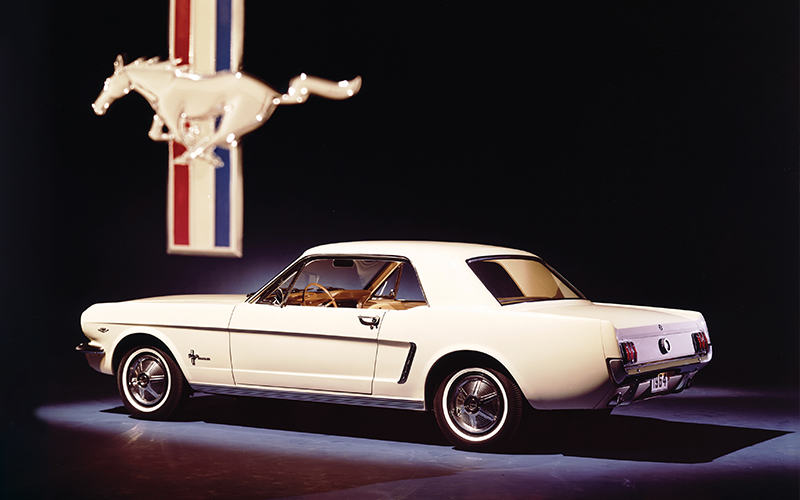
1964 Ford Mustang prototype – ford.com | Shop Ford Mustang on Carsforsale.com
Ford Mustang generations span almost 60 years, making this progenitor of the pony car segment not only the first and last of its kind but the longest-running nameplate in Ford history. It also happens to be the final car currently for sale in the SUV-ified Blue Oval lineup.
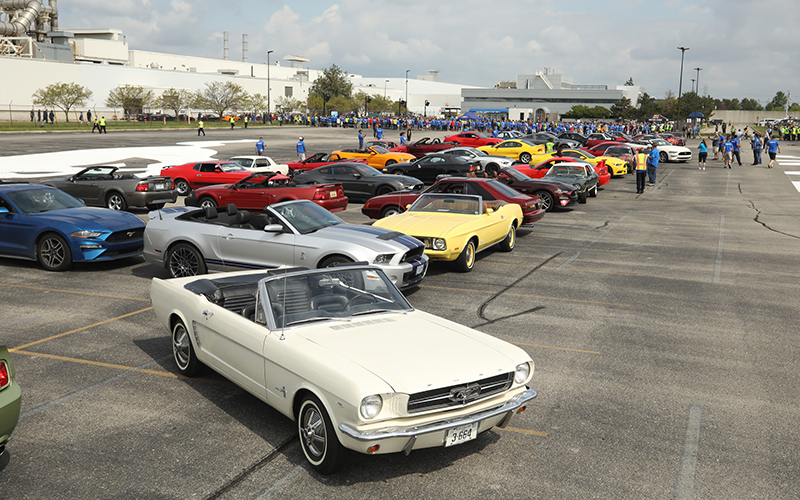
So, yes, the Ford Mustang is somewhat important in the history of the automobile. With 2024 marking the seventh generation, we felt it was a good time to look back across all the Ford Mustang models through the years and touch on some historical high points.
First Generation Ford Mustang (1965 – 1973)
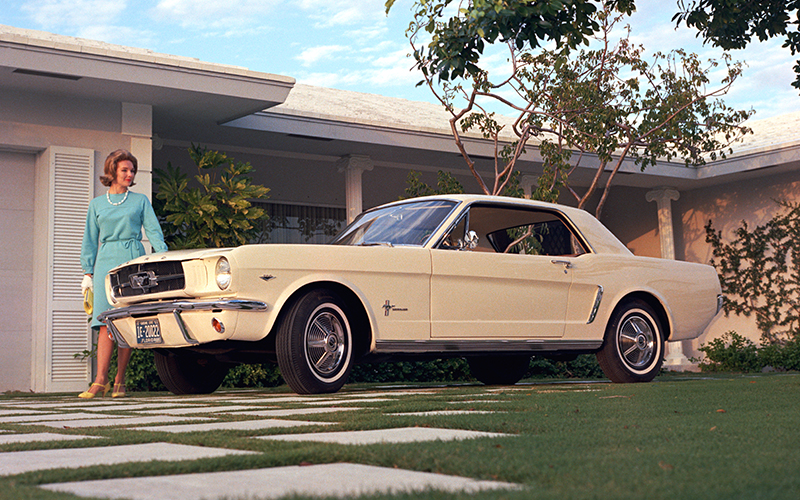
When the Mustang first landed in 1965, it bore a name said to be inspired by the P-51 Mustang fighter plane from World War II. With a long hood and short deck, these original Mustangs would define a new pony car segment that would see all manner of competition in the years to come with names like Camaro, Challenger, and Javelin.
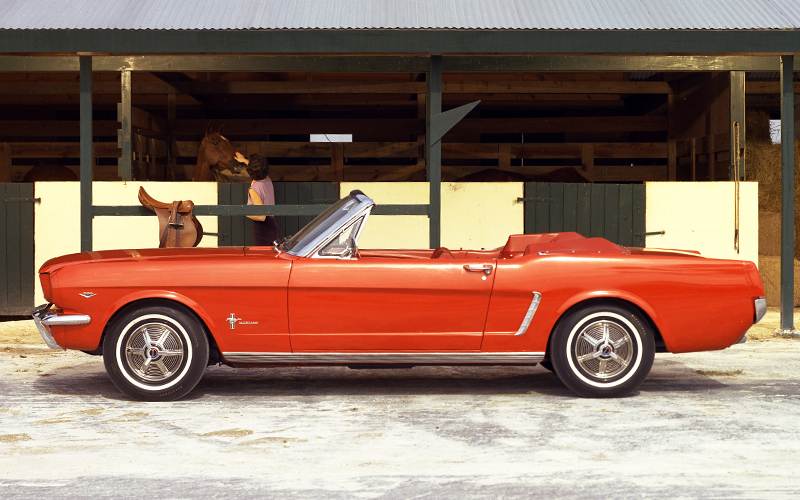
Out of the gate, the Mustang was offered in hardtop, convertible, and fastback body styles. At the time, Ford’s Falcon donated a host of interior, chassis, and drivetrain components to keep costs down. Engine options consisted of a base 200 CID inline-6 with 120 horsepower or a 289 CID V8 in various states of tune from 200 hp to 271 with a 4-barrel (bbl) carburetor.
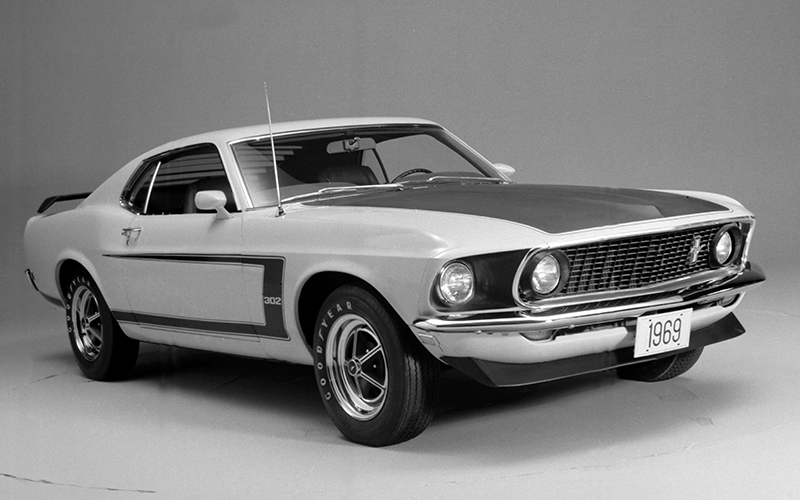
This was the Golden Age of muscle cars in Detroit and the first-gen Mustang was in the thick of it. Across redesigns in 1967, 1969, and 1971, the Mustang saw the debut of legendary nameplates like the Shelby GT30, Mach 1, and Boss 302. Let’s not forget the Boss 429 with its stonking 429 CID, 4-bbl, 375-horse V8.
Ford hoped the new Mustang would sell 100,000 units annually, but that figure was closer to 400,000 in the first year. Two years later, there were already a cool million Mustangs in customer’s hands. Though the end of gen-one production saw a sales decline as big American iron faced off with the fuel crisis of the early 1970s, the Blue Oval was on to something with its new pony car.
Second Generation Ford Mustang (1974 – 1978)
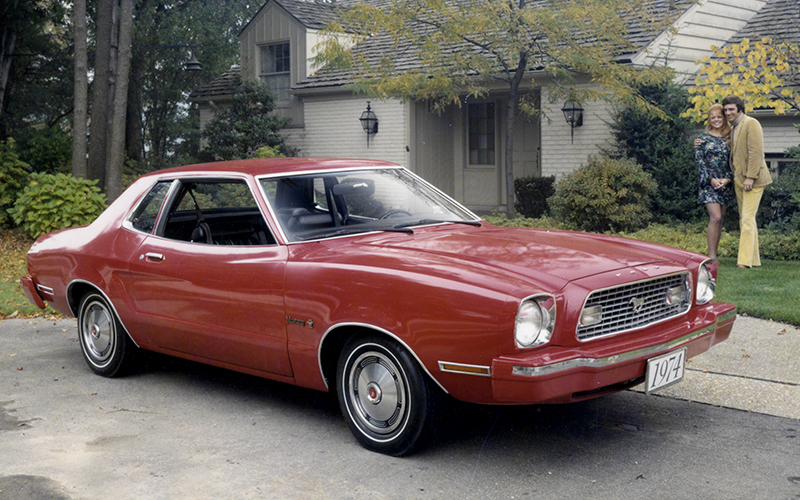
By 1970, Lee Iacocca, a key driver of the first-gen Mustang, was president of Ford and made the call to build a second-generation model that could compete with the small import crowd. This crowd, which included the Toyota Celica and Datsun 240Z, was better equipped to deal with high gas prices. And so, the Mustang II arrived.
Based on Ford’s compact Pinto, this Malaise Era Mustang is not well-loved by the legions of Mustang fans mostly due its dowdy styling and wimpy base 140 CID inline-4 powerplant. There was a 302 CID Windsor V8, but it could only muster 140 hp. The “luxury” Ghia model with its sweet vinyl roof and rear opera windows didn’t help.
Nonetheless, the Mustang II – a car we look at in-depth here – was a strong seller and kept Ford’s pony car alive during a time that most enthusiasts would prefer to forget. Fortunately, help was on the horizon and its name was Fox.
Third Generation Ford Mustang (1979 – 1993)
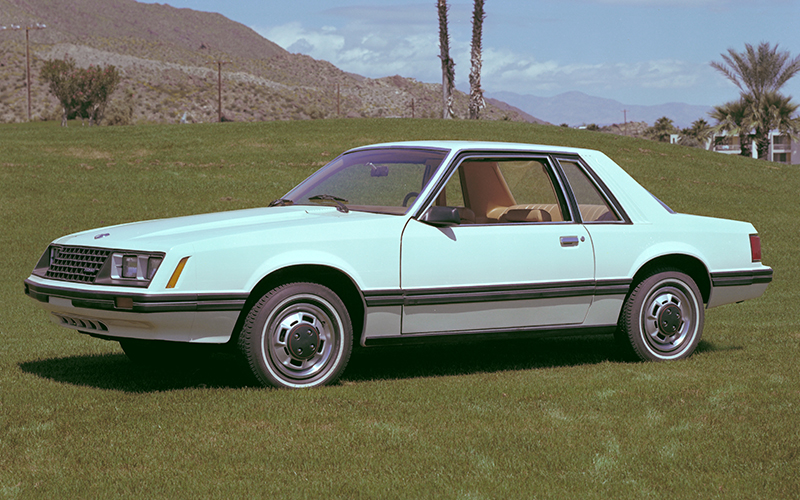
For generation three, the Ford Mustang rode on a larger platform known as Fox and so, the “Fox body” Mustangs were born. With sharp-edged design, these Mustangs are well-loved up to this day, and good thing considering they were in production for 15 years.
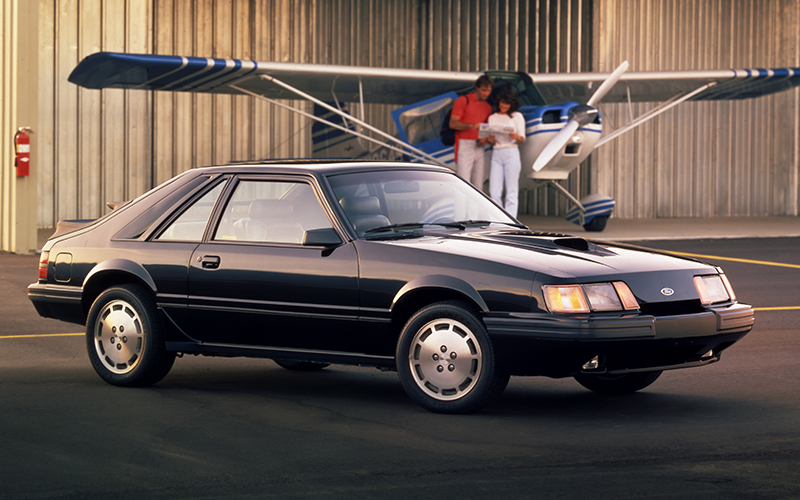
The base six-cylinder powertrain started at 2.8 liters, which grew to 3.3, and ultimately 3.8 liters by 1983. For V8 models, displacement ranged from 4.2 to 4.8 liters during production. There was also an SVO model powered by a 2.3L turbocharged four-cylinder engine, which could be considered the spiritual predecessor of today’s EcoBoost Mustangs.
Disaster nearly struck in the early 1980s when Ford decided the Mustang should share a *gasp* front-wheel-drive platform with Mazda’s MX-6. But enthusiasts caught wind of this plan and shared their dismay with Ford brass. As a result, the Mustang stretched third-gen production beyond the usual limits, and the Ford Probe was born.
Fourth Generation Ford Mustang (1994 – 2004)
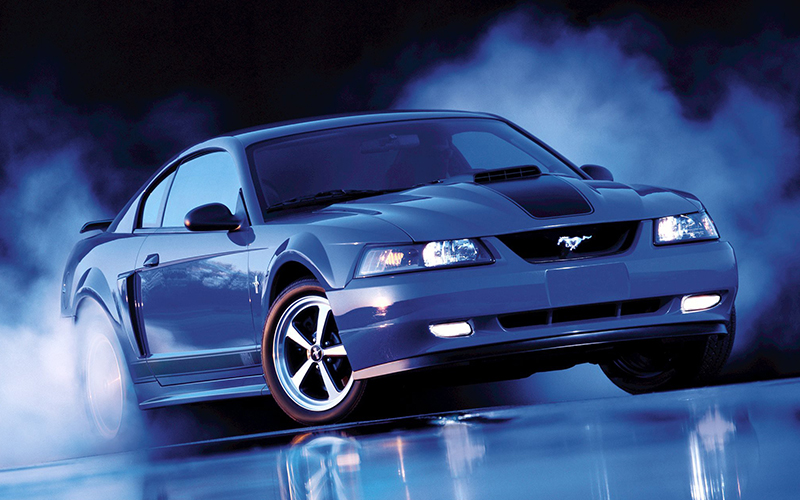
During fourth-generation, or SN95, production, the Mustang saw a concerted push into performance. Riding on a stiffened Fox chassis, the latest Ford pony car sported a major styling update that did away with the prior model’s squared-off edges in favor of smoother, more aerodynamic bodywork.
The 3.8L V6 from gen-three carried over, now making 145 hp and lashed to a 5-speed manual or 4-speed automatic. But, the 5.0L pushrod V8 was finally retired after some 30 years of use in favor of a new “Modular” 4.6L overhead cam V8. It debuted in the 1996 Mustang GT with 215 horsepower.
By 1999, a design refresh ushered in Ford’s “New Edge” look as well as a revised 4.6L V8 now rated for 260 ponies. That same year, Ford’s SVT division debuted the latest Cobra, which featured an independent rear suspension in a first for the Mustang. By 2001, the Cobra was putting down a hearty 390 horsepower. That same year brought the Bullitt nameplate to life with the Mach 1 returning two years later.
Fifth Generation Ford Mustang (2005 – 2014)
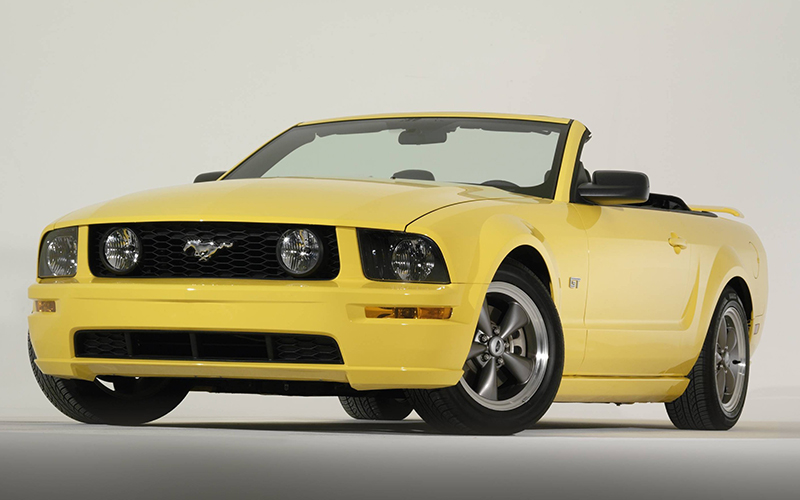
When the fifth-generation Mustang arrived in 2005, then Senior VP of Design J. Mays called the look “retro-futurism” as it featured a modern D2C chassis with style that harkened back to first-gen models. Also modernized was the list of standard equipment, which now included power for the windows, door locks, and side mirrors, remote keyless entry, and front airbags.
Initially, base fifth-gen Mustangs were fitted with a 4.0L V6 making 210 hp, while GTs sported an all-aluminum 4.6L V8 good for 300 horses. These GT models have suspension upgrades, larger brakes, and a limited-slip differential (LSD) all of which contributed to a 0-60 mph time of 4.9 seconds.
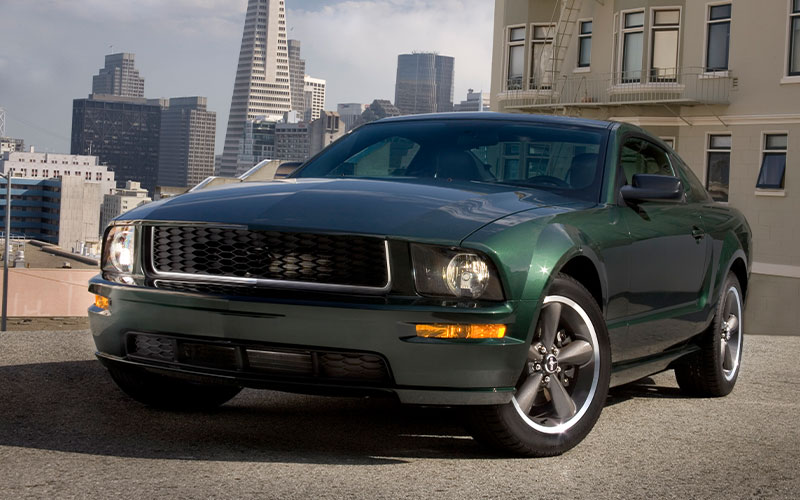
In 2008, the Bullitt model was back 40 years after the film of the same that debuted. Based on the GT, it could be painted Dark Highland Green like in the movie, had special wheels, a different engine calibration, and a special exhaust system designed to mimic the sound of the car from the film.
Right around this time, enthusiasts jumped for joy with the debut of the Shelby GT500 variant. This brute boasted a supercharged 5.4L V8 rated for 500 hp and 480 lb-ft of torque. In 2010, sleeker sheet metal was unveiled and the GT’s V8 was upgraded to make 315 horsepower. One year later, a new V6 landed with 305 hp and the GT became a Coyote.
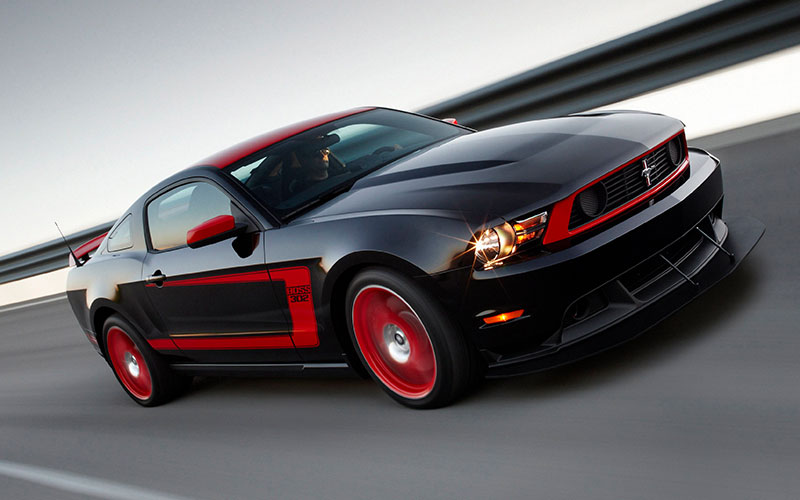
This new 5.0L V8 power plant offered 412 hp and 390 lb-ft of torque. Dubbed the Coyote, it would lead to the 2012 Boss 302 variant that featured an upgraded intake system, CNC ported heads, revised camshafts, and a Laguna Seca sub-trim with aggressive handling improvements.
Sixth Generation Ford Mustang (2015 – 2023)
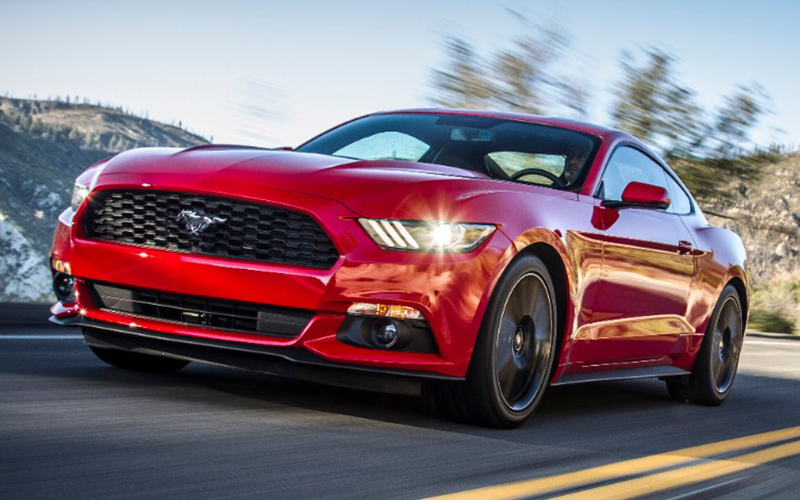
The Mustang entered the modern age with sixth-gen production and the arrival of systems like a touchscreen infotainment display with Apple CarPlay and Android Auto. This S500 series offered a 2.3L turbocharged “EcoBoost” inline-4, a 300-horse 3.7L V6, and the Coyote V8 now making 435 horsepower. Transmission options consisted of a 6-speed manual or automatic.
The other big news was an independent rear suspension across the sixth-gen Mustang lineup. This made for less axle hop when the Line Lock system – which enabled smoky burnouts at the push of a button – was unleashed. 2015 also brought a Shelby GT350 model with a wailing 5.2L Voodoo V8 featuring a flat-plane crankshaft.
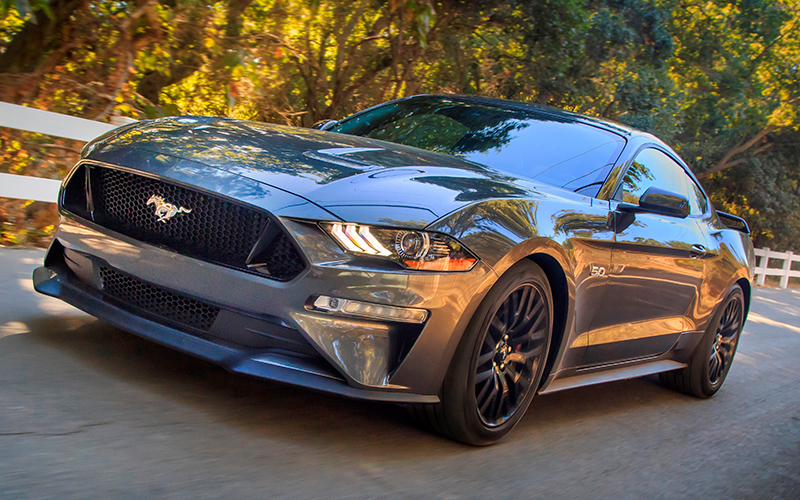
For 2018, Ford refreshed the Mustang’s sheet metal, dropped the V6 engine, added a 10-speed automatic, and bumped engine output to 310 hp in the four-pot and 460 in the V8. The hits kept coming with a new Bullitt for 2019 unveiled by Steve McQueen’s granddaughter. Then there was the incredible 2020 GT500 with a supercharged 5.2L Predator V8 making no less than 760 hp.
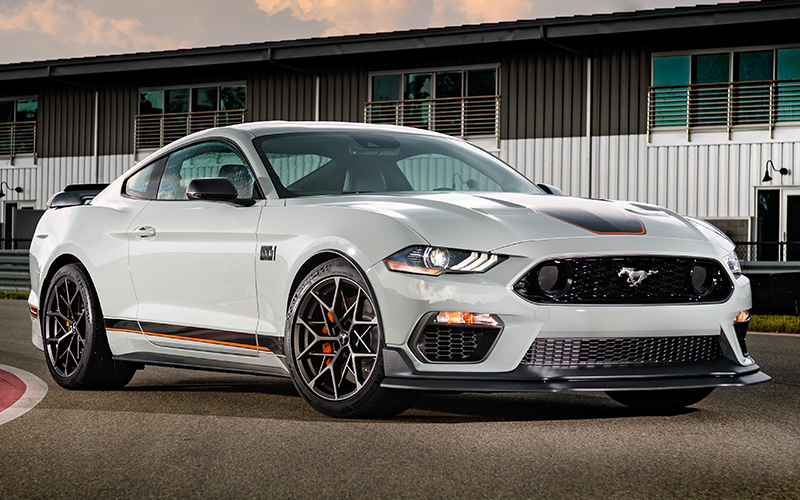
Toward the end of this generation, the Mustang Mach 1 returned running a Coyote V8 with parts out of the Shelby GT350. That included the intake manifold, engine oil cooler, lightweight Tremec 6-speed stick, and subframes at both ends. Output was a cool 480 ponies.
Seventh Generation Ford Mustang (2024-Present)
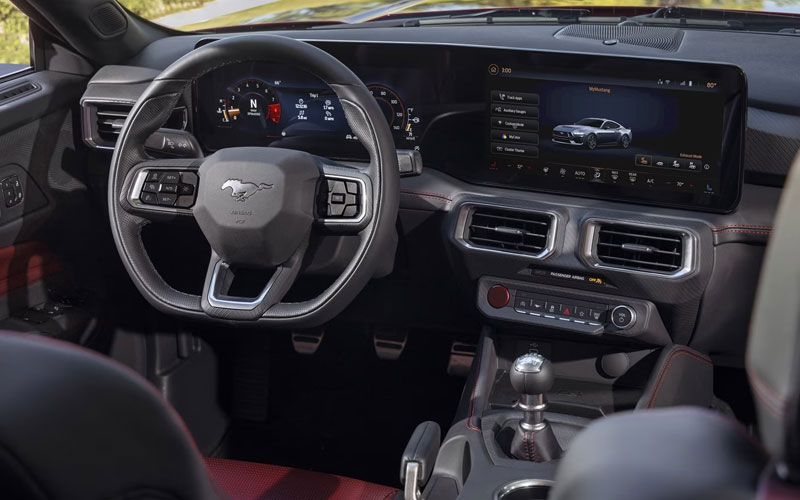
With the Chevy Camaro and Dodge Challenger gone, the 2024 Ford Mustang is the last pony car standing. Kicking off the seventh generation, it has a 315-horse EcoBoost motor in base modes or a 480-horse Coyote V8 in the GT, a car that starts at $43,000 – which is quite the value for such a potent machine.
Co-Pilot 360, Ford’s suite of driver aids, is standard and includes forward collision mitigation, a lane-keeping system, and blind-spot monitoring with rear cross-traffic alert. Running across the dash is a fully digital instrument panel and 13-inch infotainment display all integrated behind a single sheet of glass.
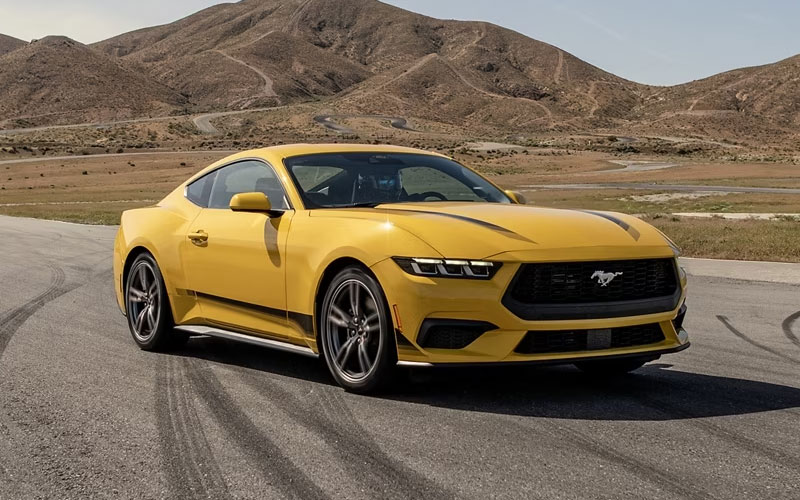
2024 Ford Mustang – ford.com | Shop new Ford Mustang on Carsforsale.com
But, this pony is about performance, and on that front, the seventh-gen Mustang delivers. An optional package adds a Torsen LSD, 19-inch summer tires, and white leather Recaro buckets to the mix. But we must recommend the all-new Dark Horse, a variant previewed here.
It makes an even 500 horsepower thanks to a unique crankshaft, forged connecting rods, an exclusive intake manifold, and beefed-up camshafts. It also looks mean with all manner of aesthetic and handling-related upgrades like huge front rotors, heavy-duty springs, and Brembo calipers.
There’s a lot more to cover with the latest Ford Mustang as we look at with this detailed review, but suffice it to say, of all the Ford Mustang generations, the seventh-gen may end up being the greatest.


